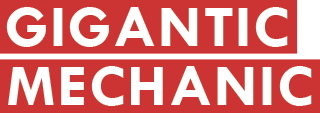We follow an iterative development process:
Iteration is the key.
Whether we are using our VOXPOP platform to build new multi-player educational programs for clients or creating a physical game to teach math, we employ an iterative development process broken into three phases: Design, Build & Playtest. Repeat.
In the Design phase, we figure out what we want to build, focusing on the experience we want to deliver. In the Build phase, we create a testable version of the design. In the Playtest phase, we invite players to play through the experience or game and provide feedback. Then we take that feedback and we do it all over again–constantly refining the design, building new features and playtesting to gather new insight.
VOXPOP: An educational role-playing platform
Is your museum looking to add dynamic interactive experiences to its educational offerings? We can help.
Design
During this phase, we work closely with the client to gain a full understanding of the intended audience and the goals of the project. We want to answer the questions:
- Who do we want to play?
- How long do we want them to play?
- Where will they play?
- What else will be competing for their attention?
- What do we want players to take away from the game?
- What is the experiential goal? What should it feel like to play?
From the answers to these questions, and others specifically geared toward the project, we develop several high-level concepts and refine them with the client. At the end of this phase, we pick a direction to explore in the Build phase.
Build
During this phase, we pick a key element of the design and build the features necessary to test whether it works or not. We want to know: does it deliver the experiential punch we are looking for.
We start by making paper prototypes and then adding features to the design and experience to make it more engaging and effective. Even with technologically complicated projects you can learn a lot about the design using low-tech components. We often find ourselves testing ideas using painter’s tape on the ground; a few posters taped to the wall; and a hand of playing cards. As we learn more about the design, we start building more elaborate technological features.
The goal is always to test out the core of the experience as quickly as possible, to make sure it’s engaging players in the right way.
Playtest
Once we have built the feature we want to test we arrange playtests with actual players from our target audience. We always invite our clients and collaborators to attend and participate in these playtests–we want to ensure the game meets their goals. During these playtests we collect usage data, observe players and gather feedback. We analyze this information down with our collaborators to figure out how to further refine the design in the next iteration.
Then we do it again.
As we move into full-scale production, we use an Agile development methodology, breaking development into short sprints, building out the art, user interface, programming, audio and media production. At the end of each sprint, the team and client has the chance to review the game and make adjustments to the direction of the development. As we progress, development is punctuated at key moments by audience-facing playtests, to ensure that we are still engaging the most important people: The Players.
At the end of the development phase, we deliver a final working version of the game.




